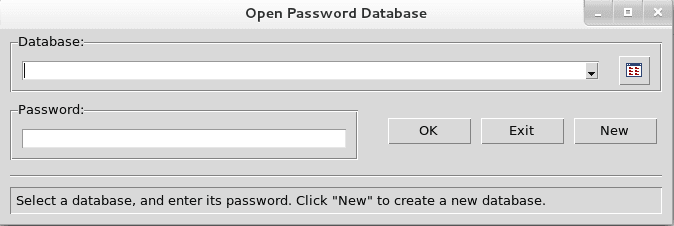Gorilla -Passwort -Installation auf CentOS/Redhat 7 Linux

- 1454
- 116
- Levke Harnapp
Die sichere Anwendung von Gorilla Passwort ist nicht Teil von CentOS/Redhat 7 -Paket -Repository und muss daher manuell auf Ihrem Linux -System installiert werden. Achten wir zunächst um die Voraussetzungen. Hier gehen wir davon aus, dass Sie das Epel -Repository bereits aktiviert haben:
# yum install tcllib tk itcl git
Im nächsten Schritt klonen wir ein aktuelles Gorilla -Passwort -Repository mithilfe Git Befehl:
$ cd/tmp/$ git klone https: // github.com/zdia/gorilla.Git
Sobald wir Gorilla Passwortquellen vor Ort kloniert haben, können wir sie in ein bestimmtes Verzeichnis kopieren/opt:
# CP -r Gorilla/Quellen//opt/gorilla
Alles, was bleibt, ist, ein ausführbares Skript in unserem zu erstellen $ Path z.B:
# echo '/opt/gorilla/gorilla.tcl '>/usr/local/bin/gorilla # chmod +x/usr/local/bin/gorilla
Alles erledigt. Jetzt haben Sie Gorilla Passwort auf Ihrem CentOS/Redhat 7 Linux -Desktop installiert. Um das Gorilla -Passwort zu starten, führen Sie einfach den folgenden Linux -Befehl aus Ihrem Terminal aus:
$ gorilla

Verwandte Linux -Tutorials:
- Dinge zu installieren auf Ubuntu 20.04
- So installieren Sie Yum unter Linux
- So klonen Sie ein Linux -System
- So aktualisieren Sie CentOs
- Klonpartition unter Linux
- So installieren Sie die Nvidia -Treiber auf Ubuntu 20.10 Groovy…
- Dinge zu tun nach der Installation Ubuntu 20.04 fokale Fossa Linux
- Linux -Download
- Wie man Pacman -Updates in Arch Linux rollt
- So upgraden Sie Ubuntu auf 20 auf.10
- « Schützen Sie Ihr System. Führen Sie Ihren Browser in FireJail aus
- Behalten Sie Ihren Zeitplan mit Taskwarrior im Auge »

